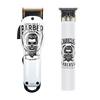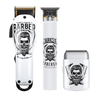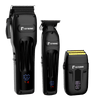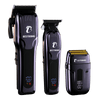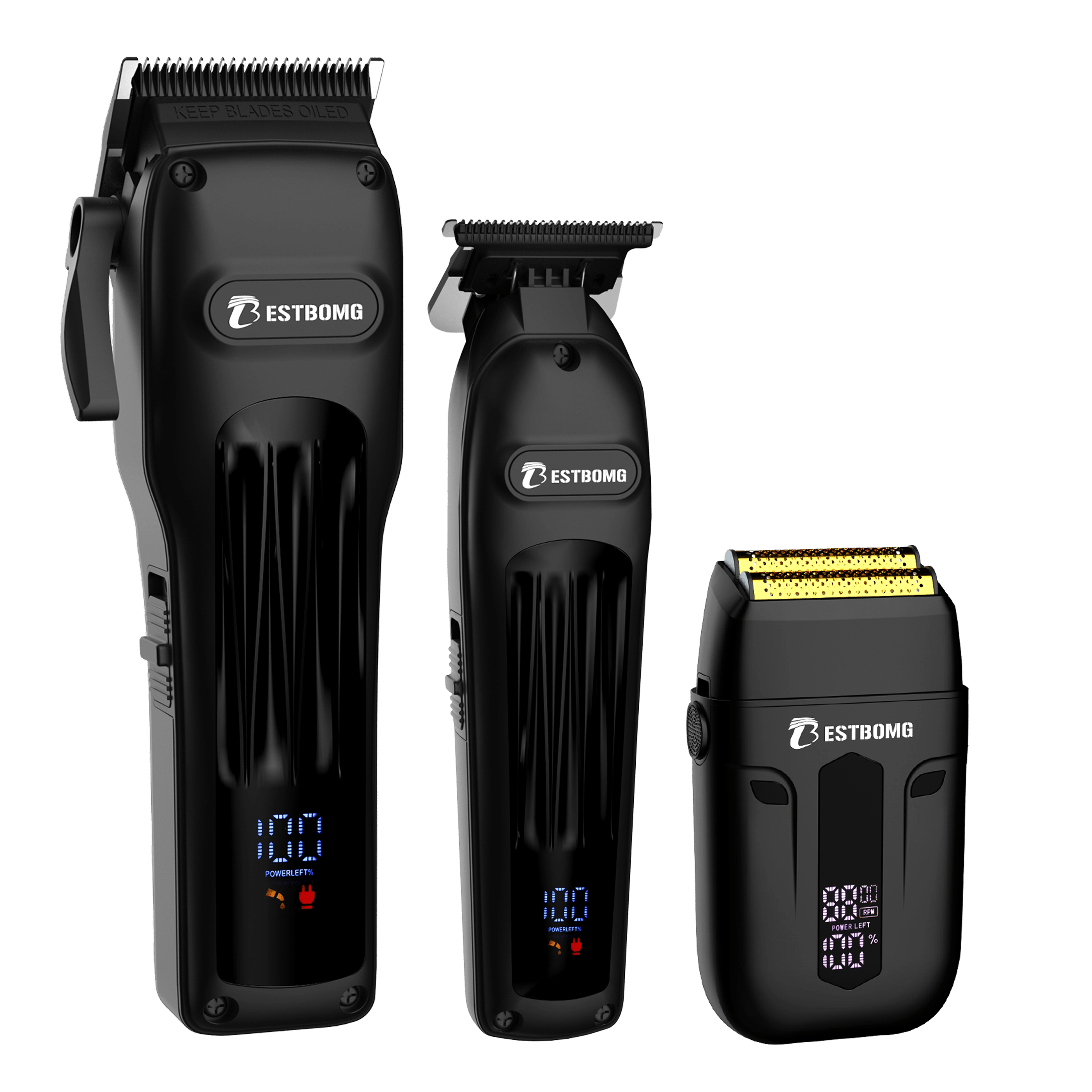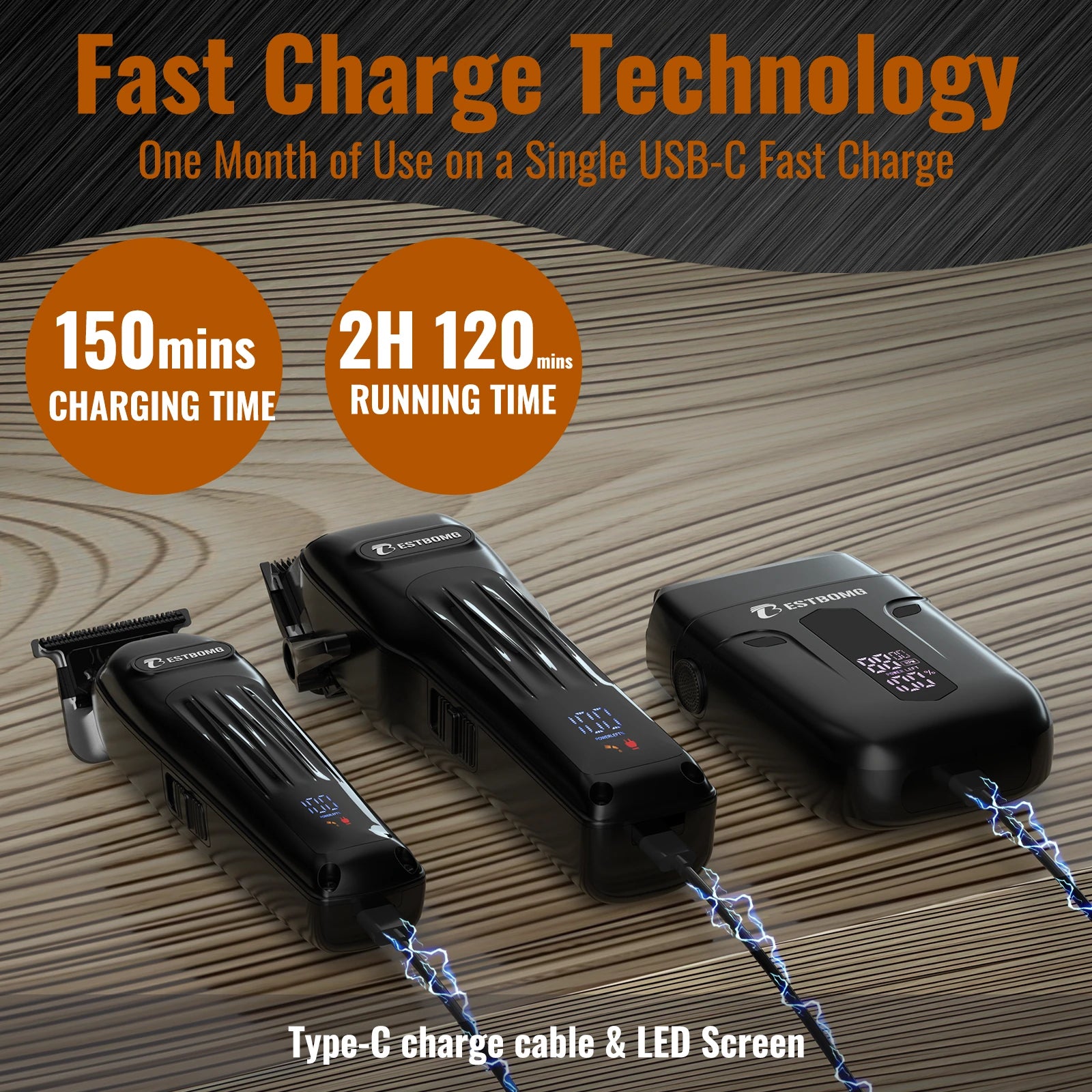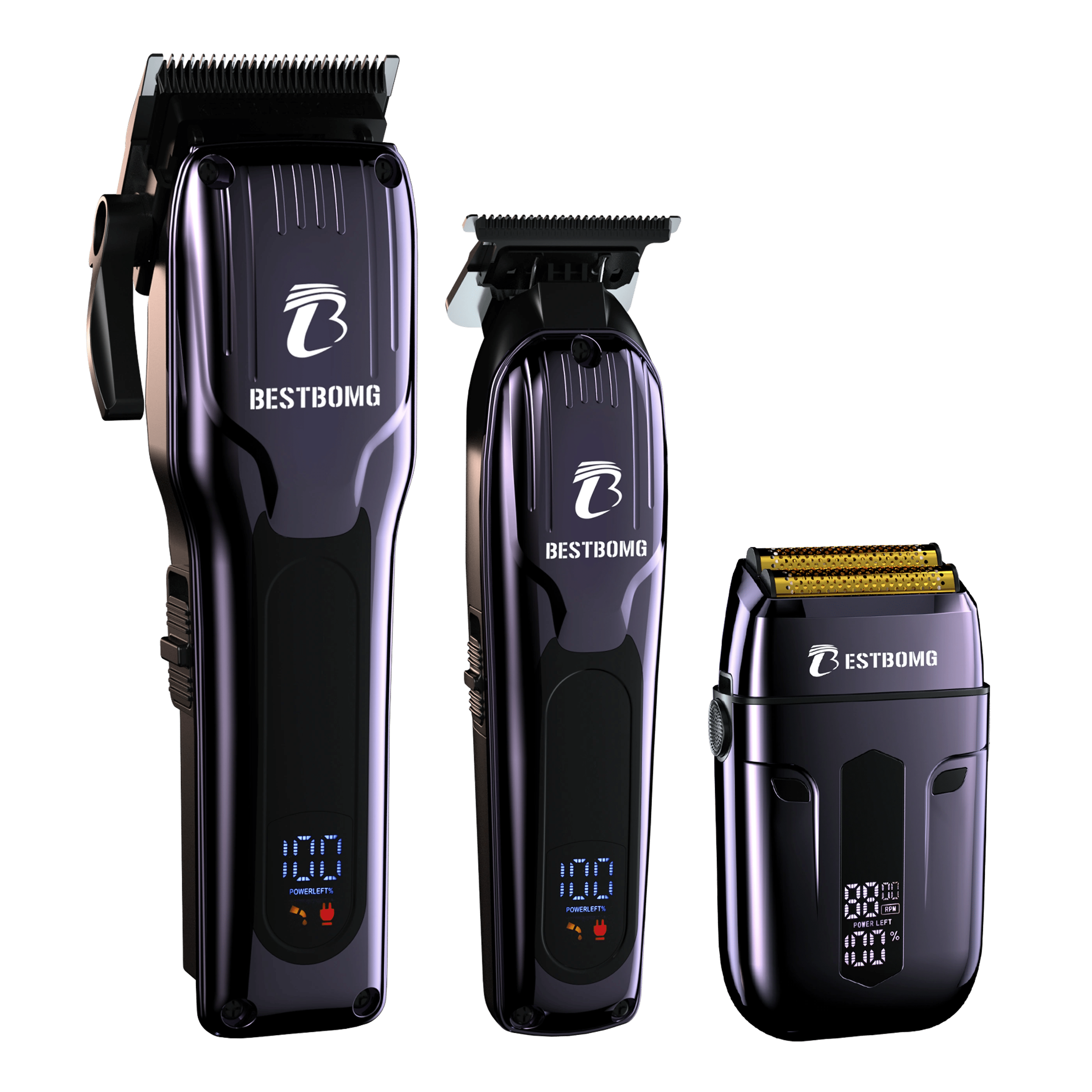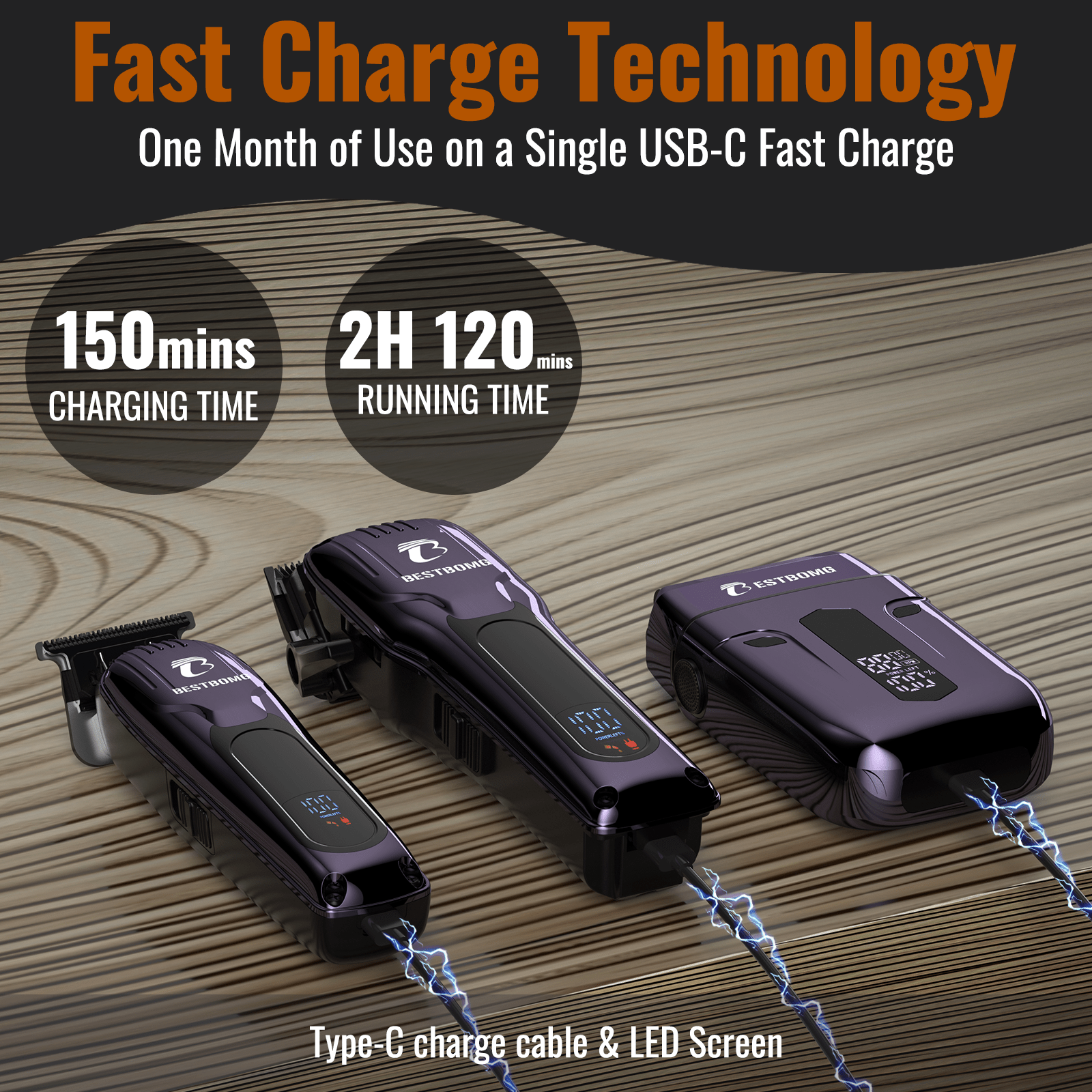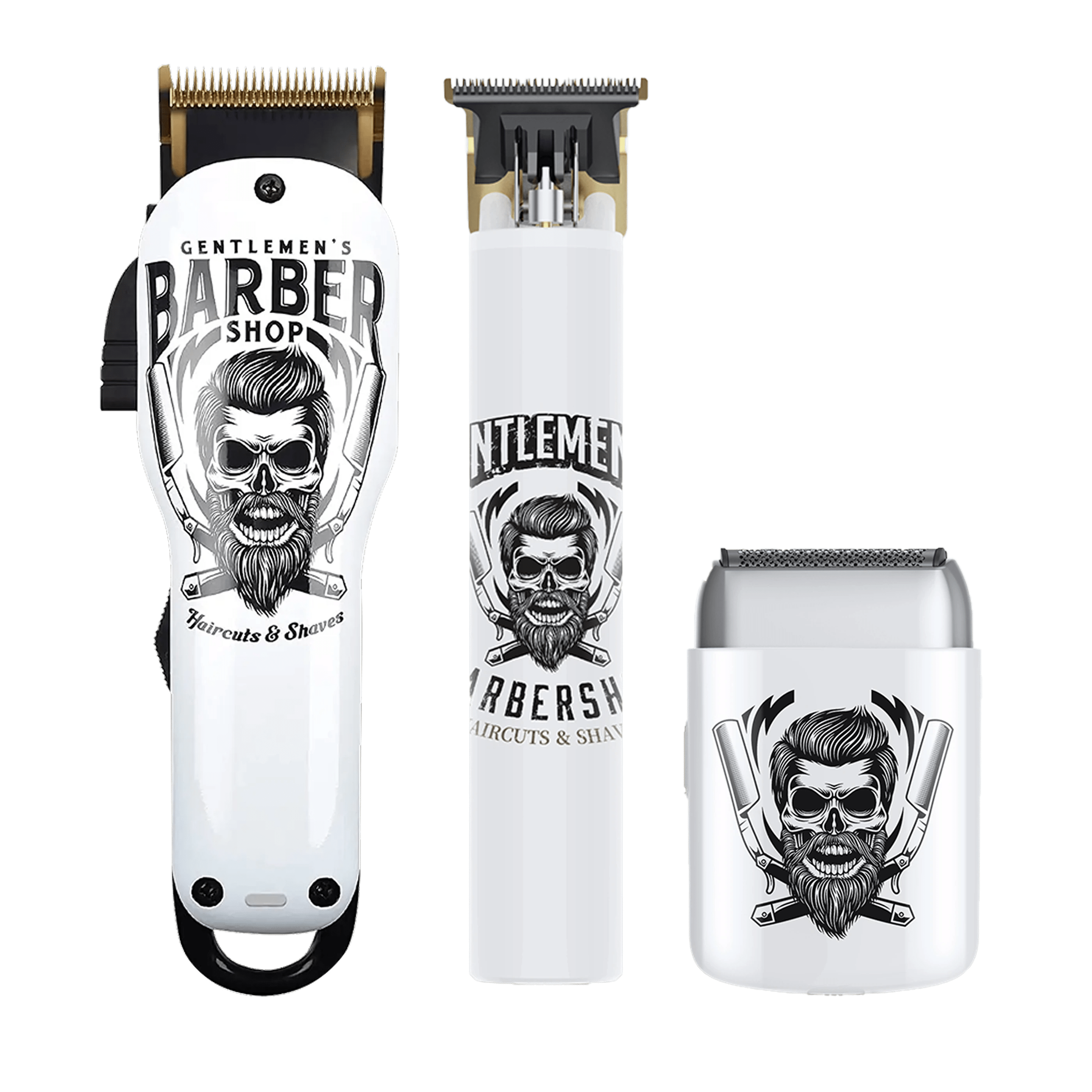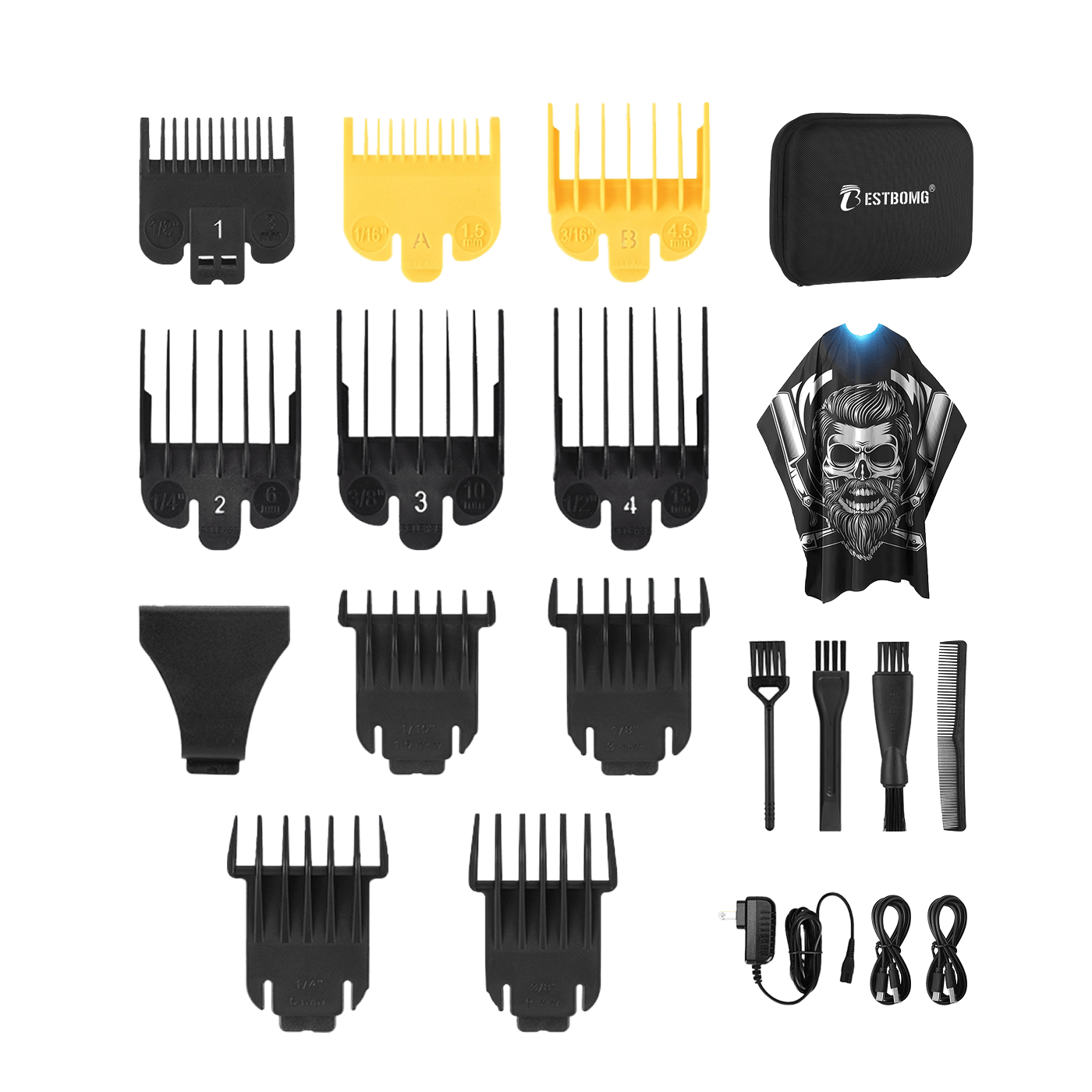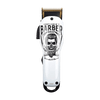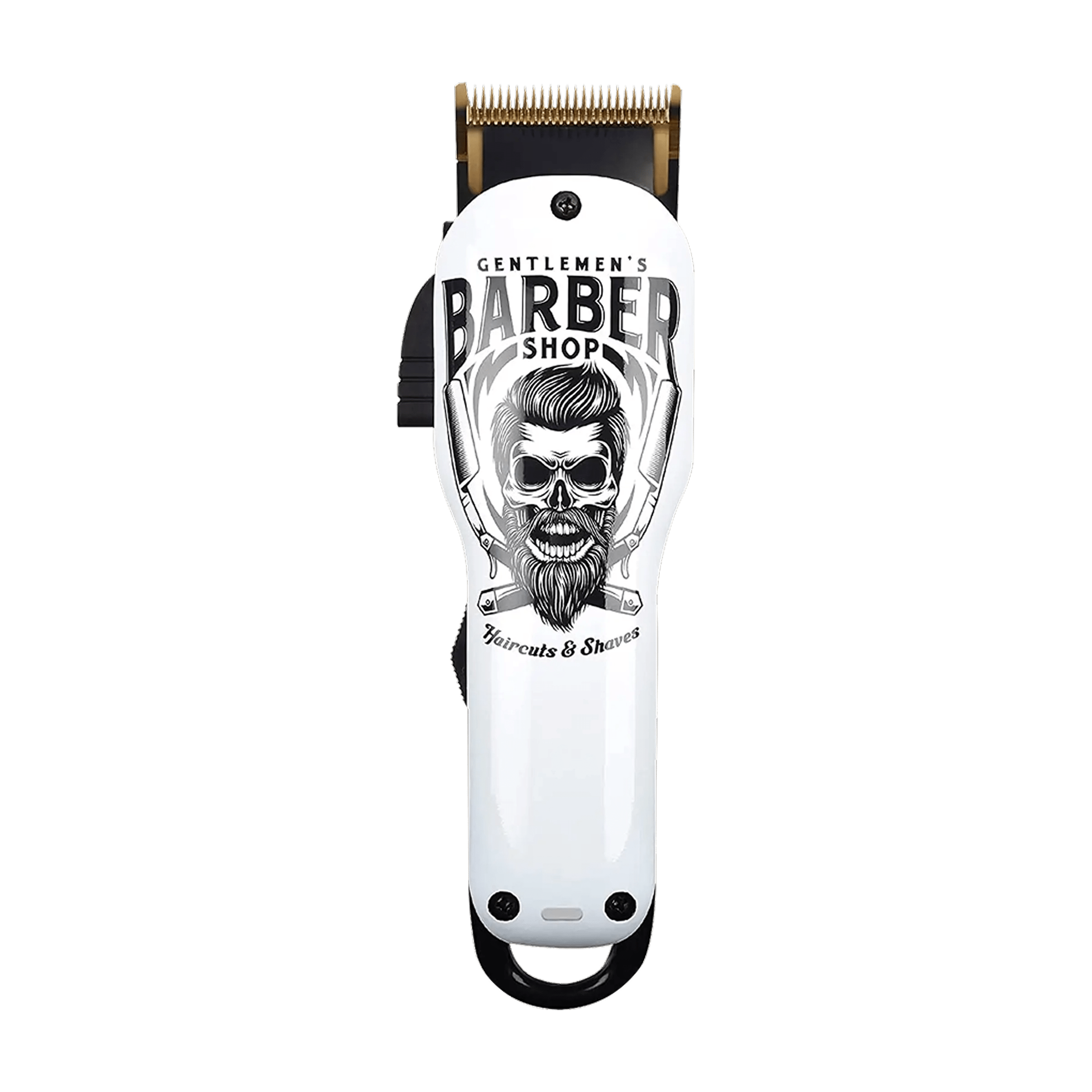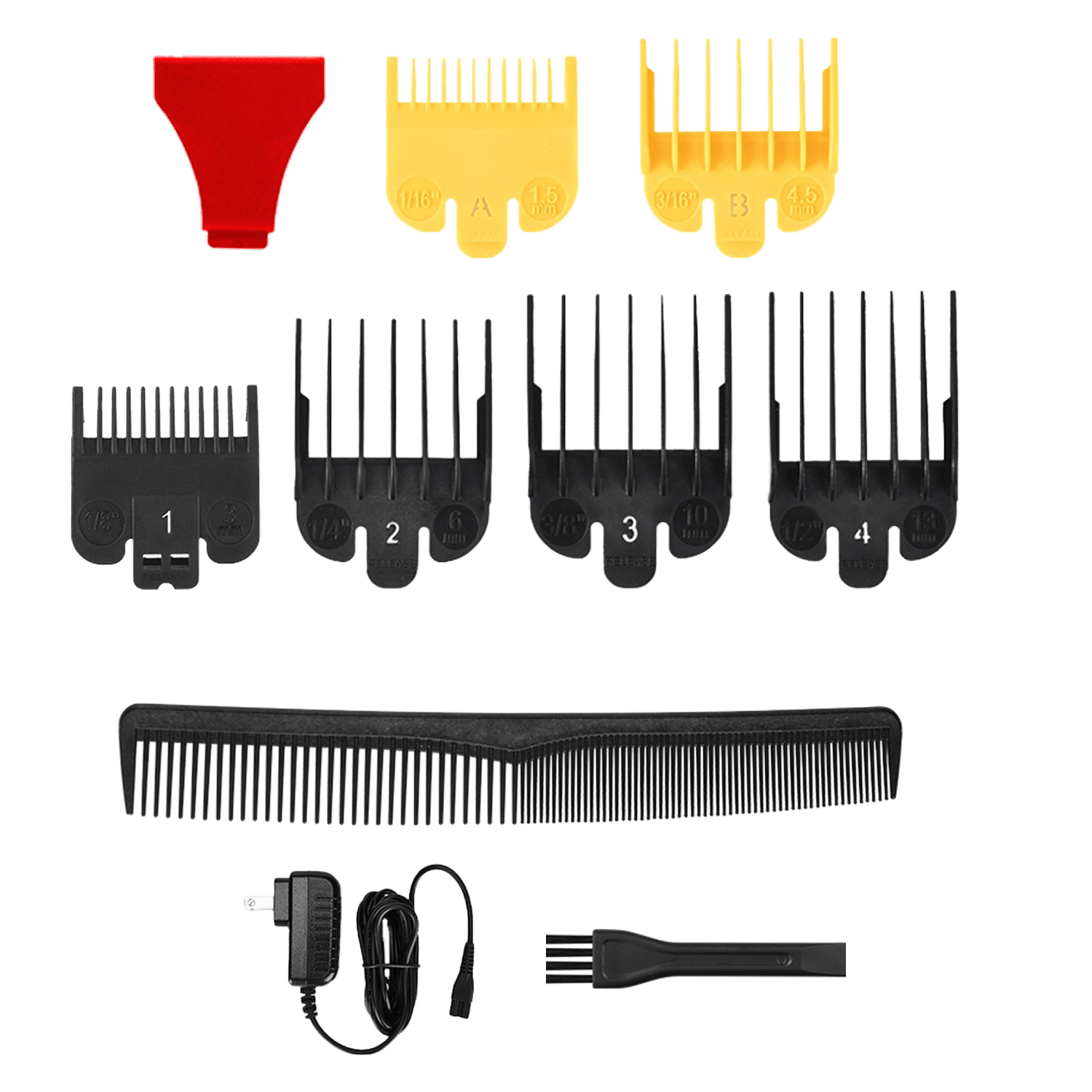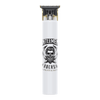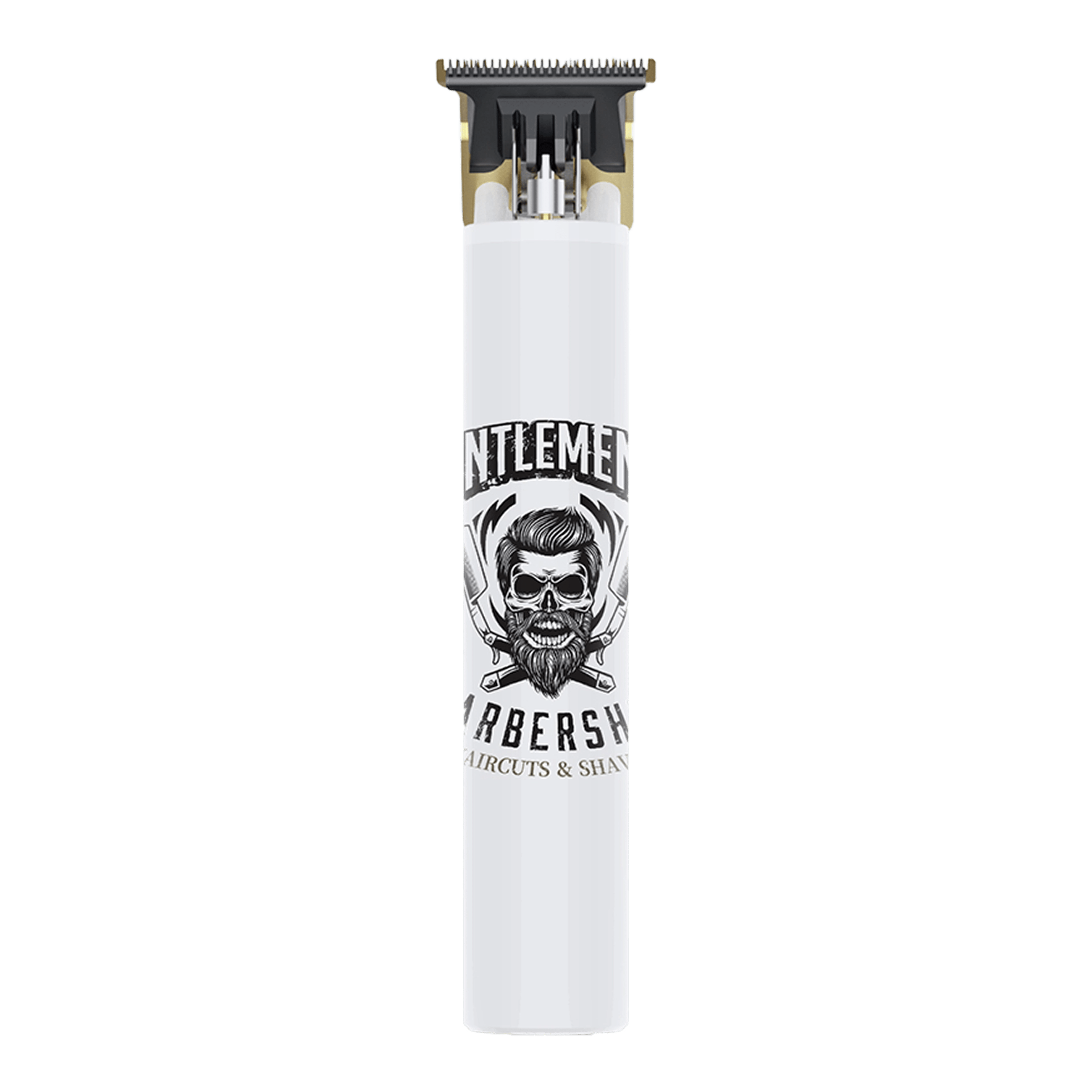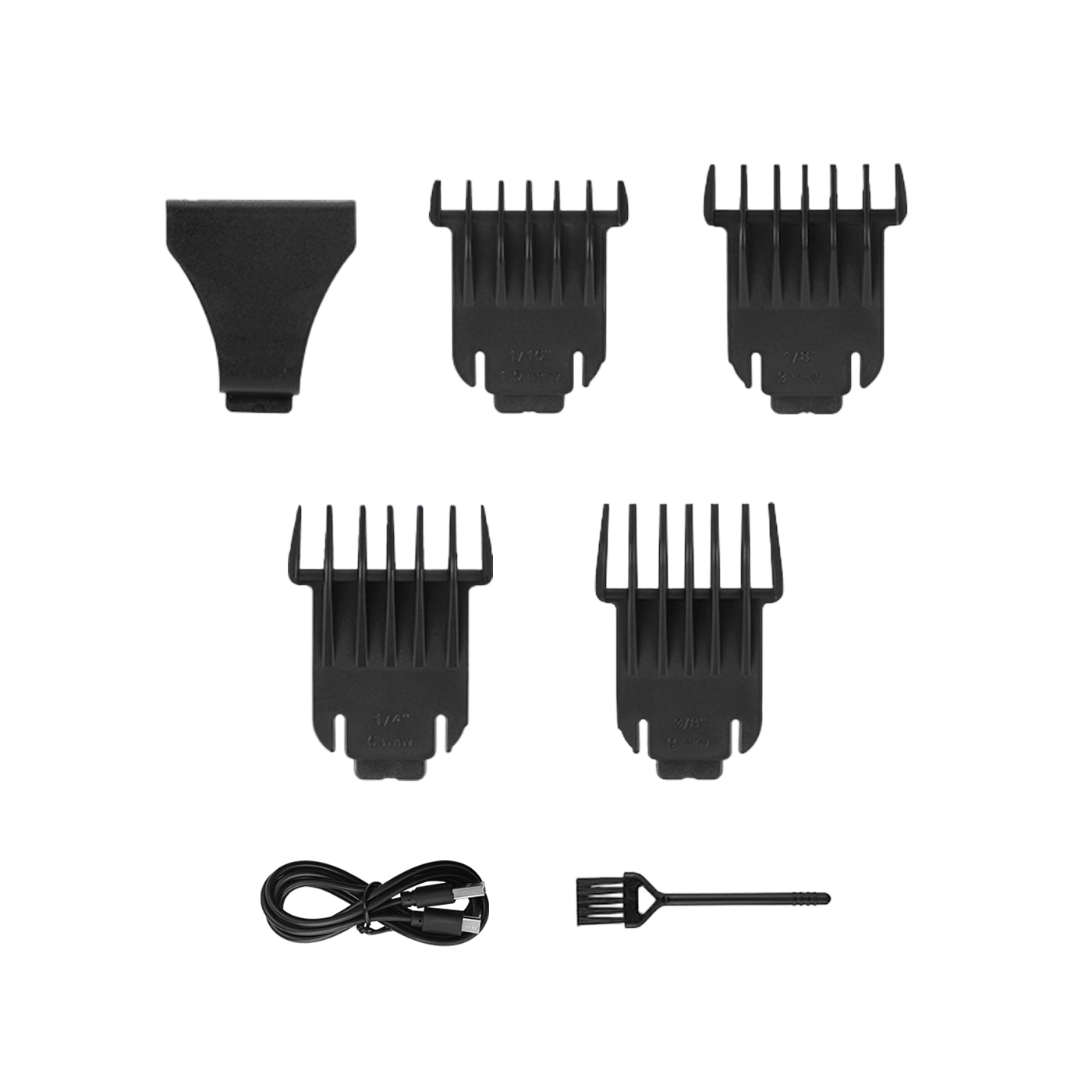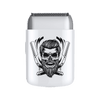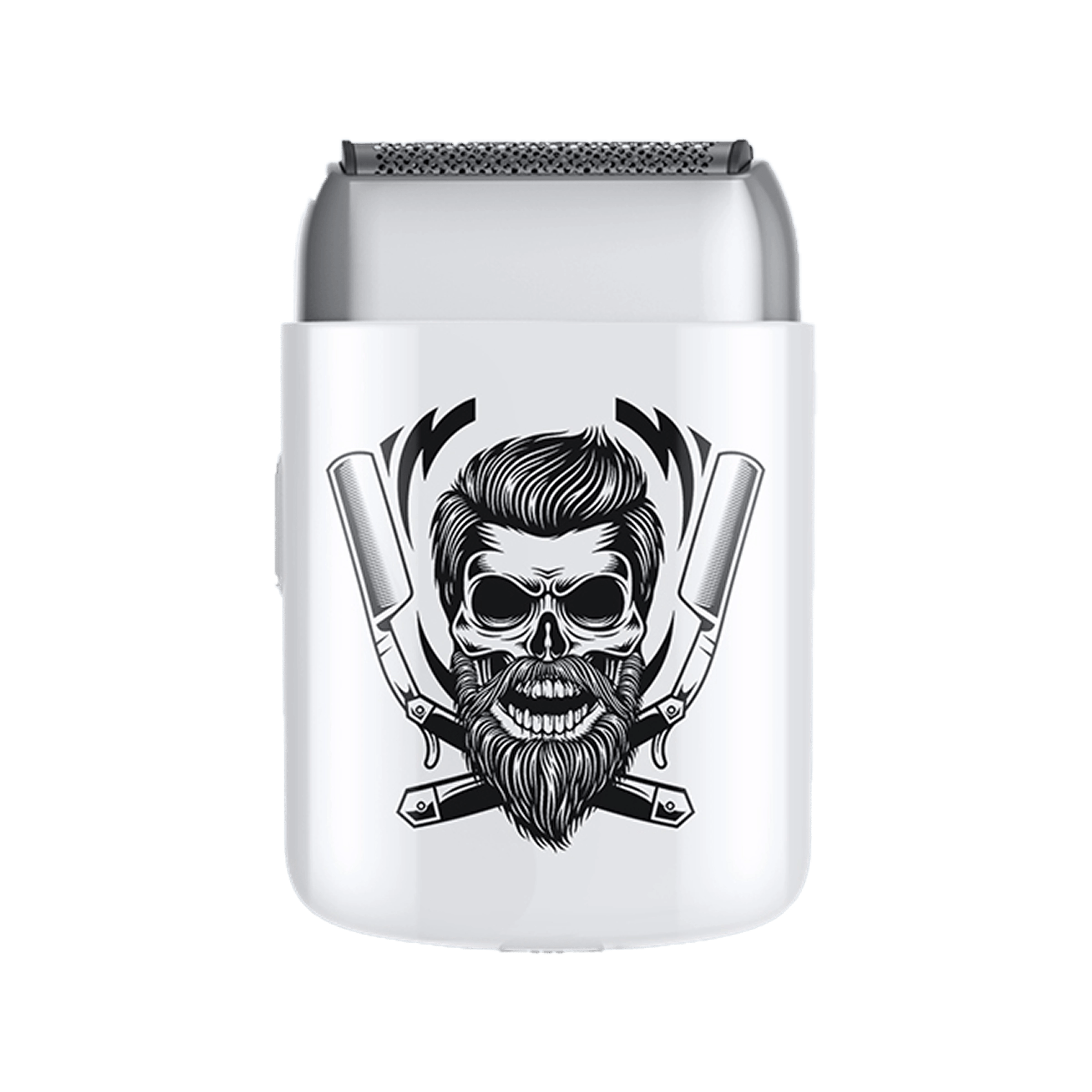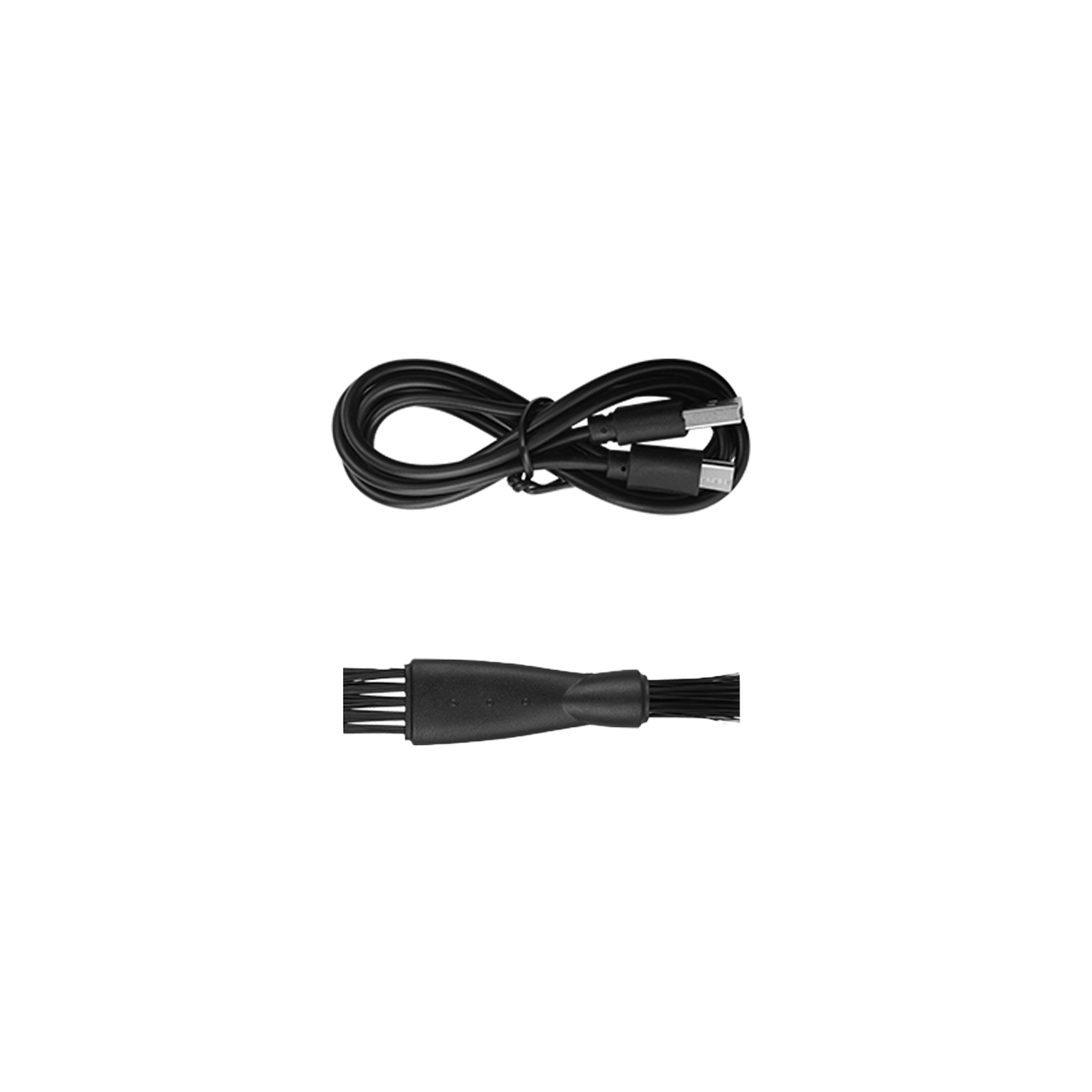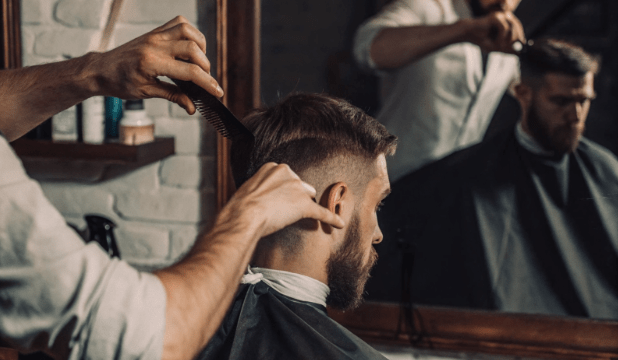Your clippers should glide smoothly through hair without tugging or snagging. If they're pulling instead of cutting, it's frustrating and painful. The good news? This problem is usually easy to fix.
Most pulling issues come from dull blades, lack of oil, or simple technique mistakes. This guide covers the 7 most common reasons your clippers pull hair and exactly how to solve each one.
The Most Common Reason: Dull or Worn Blades
Dull blades are by far the biggest cause of hair pulling. Sharp blades cut cleanly. Dull blades grab and tug before cutting.
How to tell if your blades are dull:
- Clipper hesitates or skips over sections
- You feel pulling or scraping while cutting
- Results look uneven or patchy
- Hair gets caught instead of being cut
What causes blades to dull:
Cutting dry or dirty hair wears blades down faster. Normal use over time also dulls the cutting edge. Thick or curly hair is harder on blades than fine, straight hair.
How to fix it:
- Sharpen blades every 3-4 months (see our guide on sharpening)
- Replace blades when sharpening no longer helps
- Never cut dirty hair—wash and dry it first
- Clean blades after every use
Understanding the technology behind clipper blade cutting helps you recognize when blades need attention. Quality high-performance clippers for home and professional use feature durable blades that hold their edge longer.

Lack of Oil Causes Friction and Pulling
Dry clippers perform poorly. Without oil, the blades create friction and move jerkily instead of smoothly. This makes them pull on hair.
Signs you need to oil your clippers:
- Blades feel hot during use
- Clipper sounds louder than normal
- Movement feels rough or jerky
- Pulling sensation even with sharp blades
How to oil properly:
- Apply 3 drops of clipper oil while blades are on
- One drop at each end, one in the middle
- Turn clipper on briefly to spread the oil
- Wipe off excess with a cloth
- Do this after every 1-2 haircuts
Important: Never use regular household oil or WD-40. These damage precision parts. Only use proper clipper oil.
Without oil, friction accelerates blade wear. Your blades get dull faster and pull more. According to experts who explain how to avoid folliculitis from shaving equipment, proper tool maintenance reduces the risk of folliculitis and other scalp issues.
Guard Comb Problems That Cause Snagging
Attachment guards that don't fit right cause major pulling issues. The guard should guide hair smoothly to the blades.
Common guard problems:
- Guard doesn't click firmly onto clipper
- Damaged or bent teeth on the guard
- Wrong guard size for your clipper model
- Crack or break in the plastic
What happens with bad guards:
Hair gets caught on the edge of the comb instead of flowing through. You hear rustling or scraping sounds. The clipper pulls even though blades are sharp and oiled.
Solutions:
- Check that guards click securely into place
- Replace any damaged or bent guards
- For very short cuts, work without a guard
- Buy guards made for your specific clipper brand
A professional clipper kit with full guard attachment set ensures you always have the right attachment for each cutting length.
Weak Battery Robs Cutting Power
Low battery power causes slow blade movement. Slow blades can't cut efficiently—they pull instead.
Symptoms of battery problems:
- Clipper starts strong but gets weaker
- Blades move but cutting gets harder
- Motor sounds like it's struggling
- More pulling as you continue cutting
How to fix battery issues:
- Always fully charge before each use
- Don't wait until the battery is completely dead
- Consider a corded model for consistent power
- Replace old batteries that won't hold a charge
Important: Some clippers lose 50% of their cutting power when the battery drops below half. This is enough to cause pulling even with perfectly sharp, oiled blades.
Hair That's Too Long, Thick, or Tangled
Clippers work best on shorter, combed hair. Long, matted, or tangled hair creates too much resistance.
When hair causes pulling:
- Cutting through several inches of growth at once
- Working on thick, curly, or coarse hair types
- Hair hasn't been combed out before cutting
- Trying to rush through dense sections
How to prevent this:
- Comb hair thoroughly before cutting
- Use scissors to shorten very long hair first
- Work slowly with controlled movements
- Start with a longer guard, then go shorter
- Take smaller sections on thick hair
Pro tip: For hair over 2 inches long, use a #8 guard first to remove length. Then switch to your desired shorter guard.
Clogged Blades Full of Hair and Debris
Built-up hair between the blade teeth stops them from moving properly. This causes jerky movement and pulling.
Signs of clogged blades:
- Visible hair packed between teeth
- Clipper slows down mid-cut
- Sudden increase in pulling
- Motor sounds strained
How to clean clippers:
- Turn off and remove guards
- Use the cleaning brush to remove loose hair
- Blow out debris with canned air (optional)
- For waterproof models, rinse under water
- Dry completely before using again
- Clean after every single use
Important: Hair mixed with oils and products creates sticky buildup. This is worse than just hair alone. Regular cleaning prevents this accumulation.
Wrong Technique Makes Good Clippers Pull
Sometimes the problem isn't your clipper—it's how you're using it. Poor technique causes pulling even with perfect equipment.
Common technique mistakes:
- Moving too fast through the hair
- Cutting at an angle instead of flat
- Pressing too hard against the scalp
- Going with the hair growth direction
- Not keeping skin taut
Correct technique:
- Move slowly with light, even pressure
- Cut against the hair growth direction
- Keep the guard flat on the scalp
- Pull skin taut with your free hand
- Use smooth, controlled movements
For touch-ups: When going over an area a second time, lift the clipper slightly as you make contact. This prevents the "first contact" patches many beginners experience.
Learning essential hair cutting techniques for men improves results and reduces pulling incidents.
When to Replace vs. Repair Your Clippers
If you've tried everything and clippers still pull, it might be time for new ones or professional repair.
Replace clippers when:
- Blades can't be sharpened anymore (too worn)
- Motor sounds weak even with full battery
- Parts are broken or missing
- Cost of repair exceeds replacement cost
Consider repair when:
- Clippers are high-end professional models
- Problem is clearly blade-related only
- Motor works fine but blades won't align
- Under warranty coverage
What to look for in new clippers:
- Self-sharpening ceramic or titanium blades
- Powerful motor (7,000+ RPM minimum)
- Long battery life (180+ minutes)
- Easy-to-clean waterproof head
- Multiple guard sizes included
Quality tools from complete grooming tool selection are built to minimize pulling issues with sharp blades and reliable motors.
Quick Maintenance Checklist to Prevent Pulling
Follow this simple routine to keep clippers cutting smoothly without pulling.
After every haircut:
- Brush hair out of blades and guards
- Oil blades with 3 drops
- Wipe off excess oil
- Store in a dry place
Once a week (for frequent use):
- Remove blades and clean thoroughly
- Check blade alignment
- Inspect guards for damage
- Charge battery fully
Every 3-4 months:
- Sharpen or replace blades
- Deep clean all parts
- Check screws are tight
- Replace worn guards
Signs you need immediate attention:
Pulling that gets worse over time means your maintenance isn't keeping up. Address dull blades and lack of oil right away—these cause 90% of pulling problems.
Frequently Asked Questions
Why are my clippers pulling hair even after oiling?
The blades are dull. Oil reduces friction but can't fix a dull edge. Sharpen or replace the blades. Also check alignment—the top blade shouldn't stick out past the bottom blade on the sides.
How often should I oil my hair clippers?
After every 1-2 haircuts. Apply 3 drops (one at each end, one in the middle), run the clipper briefly, then wipe excess. Takes 30 seconds and prevents 90% of pulling problems.
Can dirty hair make clippers pull?
Yes, significantly. Oils and products stick to blades and create drag. Always cut clean, dry hair. If you cut dirty hair, clean and oil your blades immediately after.
Why do my clippers pull with certain guards but not others?
The guard is damaged or doesn't fit properly. Check if it clicks firmly. Look for bent teeth or cracks. Only use guards made for your specific clipper model.
Is pulling hair a sign I need new clipper blades?
Usually yes. Consistent pulling despite proper oiling and cleaning means blades are too dull. Try sharpening first. If that doesn't work, replace the blades.
Why do my clippers pull on thick or curly hair?
It creates more resistance. Solutions: Use a more powerful clipper (7,000+ RPM), work slowly, comb thoroughly first, and start with a longer guard before going shorter.
Stop frustrating haircuts and painful pulling. Get reliable clippers with sharp blades and proper maintenance tools at Bestbomg for smooth, professional results every time.
Read more
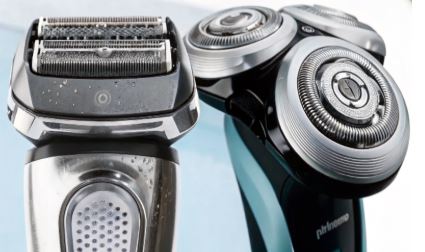
Foil Shavers: What They Are and How They Work
A foil shaver is an electric razor that uses oscillating blades hidden beneath a thin, perforated metal foil to cut hair close to the skin. The foil's tiny holes capture hair and guide it to the bl...
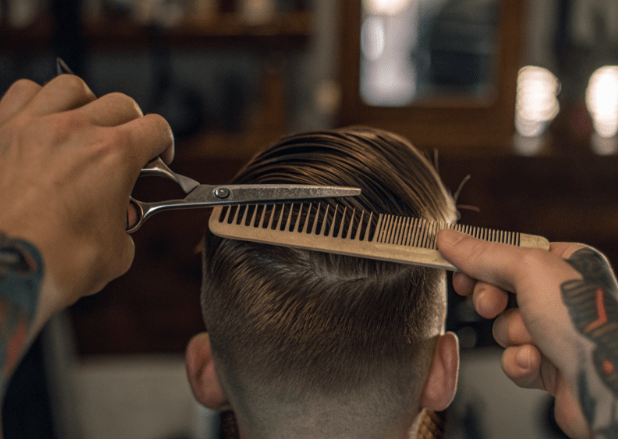
Hair Clippers vs Scissors: Which is Better for Your Haircut?
Neither clippers nor scissors are inherently better—the choice depends on your desired haircut style. Clippers provide quick, uniform cuts ideal for buzz cuts and fades, while scissors offer versat...
